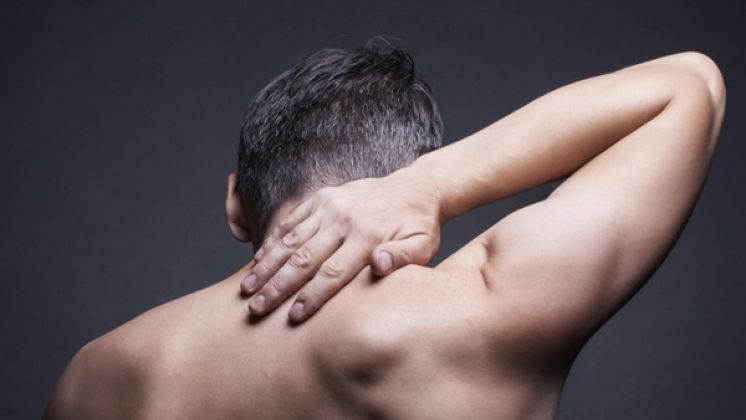How To Treat Neck Injuries
Physiotherapist Lucy Macdonald explains some of the most common neck injuries and how to treat them

How The Neck Works
The neck is part of the spine, so it works in a very similar way to the back. It consists of the same structures as the lower part of the spine: discs, vertebral bones, facet joints, fascia and so on. They are, however, smaller and a different shape.
The nerves that exit through small holes between each vertebra in the neck carry sensory and motor information to the fingertips and head. If they become irritated or damaged they can cause pain, reduced sensation, pins and needles or weakness in the arms and head. This is why migraines and headaches can often be alleviated by treating the neck.
If you experience any pain, severe or prolonged pins and needles, weakness, or numbness in your neck/arms/hands/head, you must see a physiotherapist or doctor to ensure you do not do any further damage BEFORE following any of the advice or exercises below.
Common Causes Of Neck Pain
Neck posture in sitting and training
The most common cause of neck pain that I see is from holding the neck in the incorrect position when sitting and training. The effect of gravity on the head is that it moves down and forwards, away from the body. As a result, the head has to be rotated upwards in order to look forward. This puts a combination of shearing and compression forces through the structures of the neck causing damage, pain and possibly weakness. This is worsened by the strain of training, during which the head often moves even further forward and is tilted up. If you’ve spent years holding your head in the incorrect position it is often impossible to correct it without help – and self-correcting can make it worse. A physiotherapist can take you through the posture correction below.
How to correct neck posture
- Lie on your back with a small pillow under your head. Put your hand gently over the front of your neck. These muscles that you can feel with your hand should stay completely relaxed because the muscles you need to use are deep inside your neck and cannot be palpated. Gently elongate the back of your neck and very slightly tuck your chin in. If you can feel the muscles become tense under your hand you are not using the correct muscles so stop immediately. You should be using less than 20% of your maximum effort and all you should feel is a slight increase in tension deep in your neck and absolutely no pain. Do not continue if you have any pain, pins and needles or other symptoms.
- Now do the same sitting up. Time yourself to see if you can hold the new position for two minutes at least four times a day – in fact, do it whenever you get a chance until it becomes your subconscious normal.
- When training, always try to keep the back of your neck elongated and your chin very slightly tucked in.
Incorrect shoulder posture sitting and training
The neck shares many muscles with the shoulder and therefore the position of the shoulder has a direct effect on the neck.
How to correct shoulder posture
- The most common incorrect position is the shoulder blade being held too far forward and down, which puts excessive strain through the neck. But simply pulling it back won’t sort it out and can make it worse. You need to gently lift the shoulders upwards and then very slightly backwards and down in an outward twisting motion. You then need to train the shoulder to hold itself in this position as you train.
- To train the muscles that hold your shoulder in this position, lie on your stomach with your chin tucked in and your arms out to the sides at 90˚. Move your shoulders towards your ears and then move your shoulder blades towards your spine. Lift your wrists and then your elbows, keeping your shoulder blades together, then lower everything. Do not do this if you have any pain.
Thoracic spine stiffness
If your thoracic spine – the part of your back just below the neck – is stiff there is often excess movement in the neck causing strain and injury. Therefore mobilising your thoracic spine is essential in treating neck pain.
Thoracic extension
Roll up a large towel so that it forms a sausage shape that you can place under your head and all the way down your spine to your bottom. Simply lie on the towel like this with your knees and hips bent and your feet flat on the floor. Make sure your chin is tucked in slightly and the palms of your hands are facing upwards. Lie like this for five to 10 minutes every day.
Get the Coach Newsletter
Sign up for workout ideas, training advice, reviews of the latest gear and more.

Lucy Macdonald has been a sports physiotherapist since 2004, with experience treating professional and amateur sports people including members of the GB ski and powerlifting teams.
